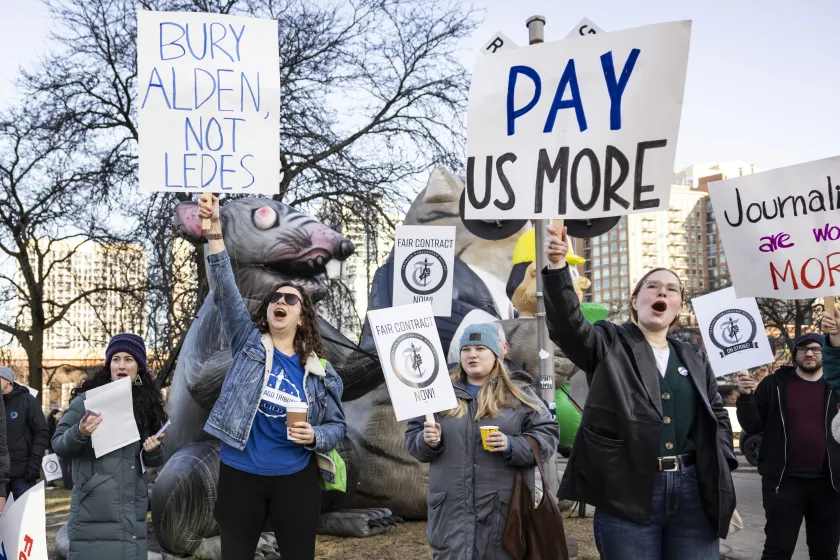Class Action for ‘Company-wide, Illegal Underpayment’
Homepage photo: Chicago Tribune journalists and employees, and their supporters, picket Feb. 1 alongside inflatables of Scabby the Rat during the union’s 24-hour strike. (Credit: Ashlee Rezin/Chicago Sun-Times)
Support Journal-ismsDonations are tax-deductible.
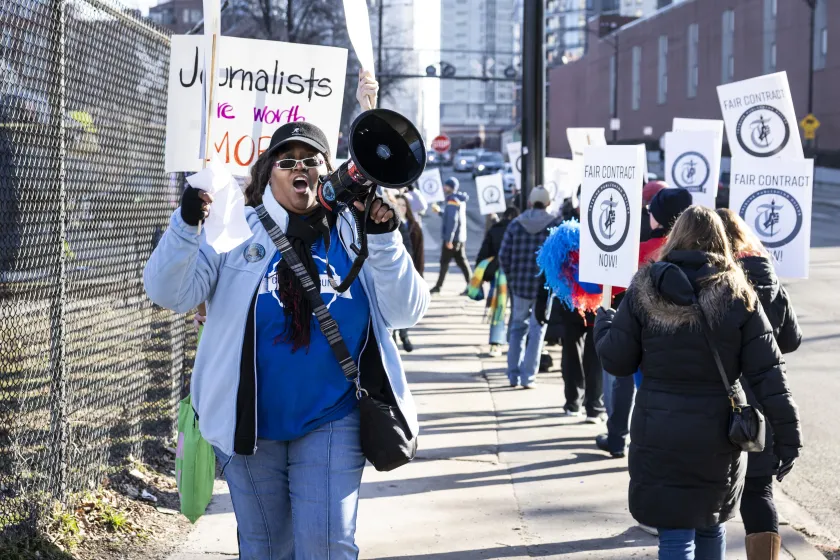
Features writer Darcel Rockett, one of those who filed suit Thursday, chants with other Chicago Tribune employees as they picket Feb. 1 outside the Chicago Tribune Freedom Center. “It shouldn’t be this way,” Rockett said. “[Alden] should be embarrassed by it … I really hope the needle moves today.” (Credit: Ashlee Rezin/Chicago Sun-Times)
Class Action for ‘Company-wide, Illegal Underpayment’
Three Black journalists at the Chicago Tribune joined four of their colleagues Thursday in a federal class action suit against the newspaper and its ownership group, the hedge fund Alden Global Capital, alleging there has been a “company-wide, illegal underpayment of female and African American” employees.
The three are photojournalist Terrence James, who has worked for the Tribune since 1998 and is the only African American photojournalist currently there; Deanese Williams, deputy senior content editor for the emerging news
desk, who has worked at the paper since 2007, and Darcel Rockett, a senior reporter who worked for the Tribune from 2008 until 2009 and again from 2010 until the present.
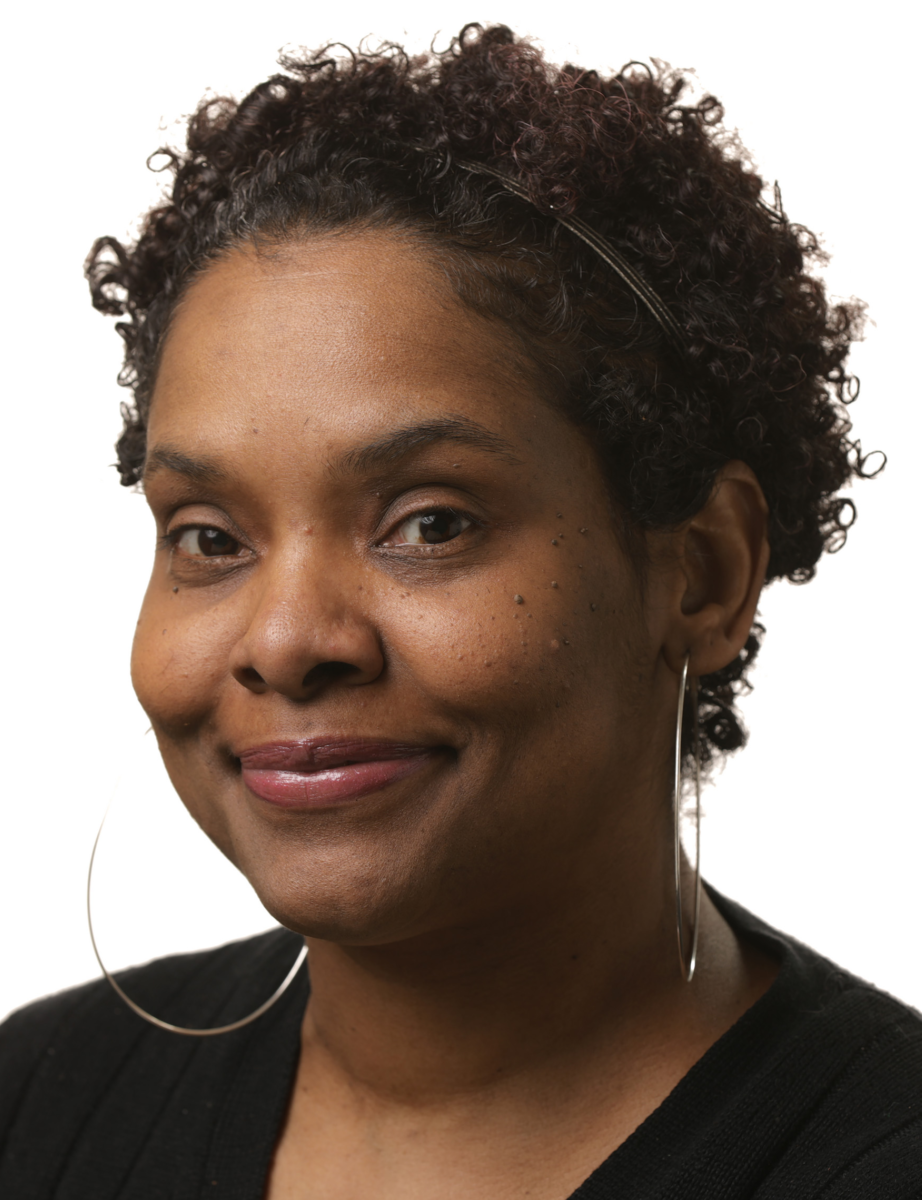 The complaint provides brief profiles of each. Of Williams (pictured), also known as Williams-Harris, the suit says, “As an African American woman whose parents grew up in the Robert Taylor housing projects, Williams-Harris felt like she had a responsibility to give a voice to the voiceless in her community and report on stories that were not otherwise told.
The complaint provides brief profiles of each. Of Williams (pictured), also known as Williams-Harris, the suit says, “As an African American woman whose parents grew up in the Robert Taylor housing projects, Williams-Harris felt like she had a responsibility to give a voice to the voiceless in her community and report on stories that were not otherwise told.
“As a MetPro [training program] Resident, however, Williams-Harris’ reality was much different; she was made to feel like the ‘affirmative action hire’ and was treated like a lower-tier worker. Despite the disparate treatment in the newsroom, Williams-Harris landed some Page One stories as a Resident, rotating between several different newsroom desks.”
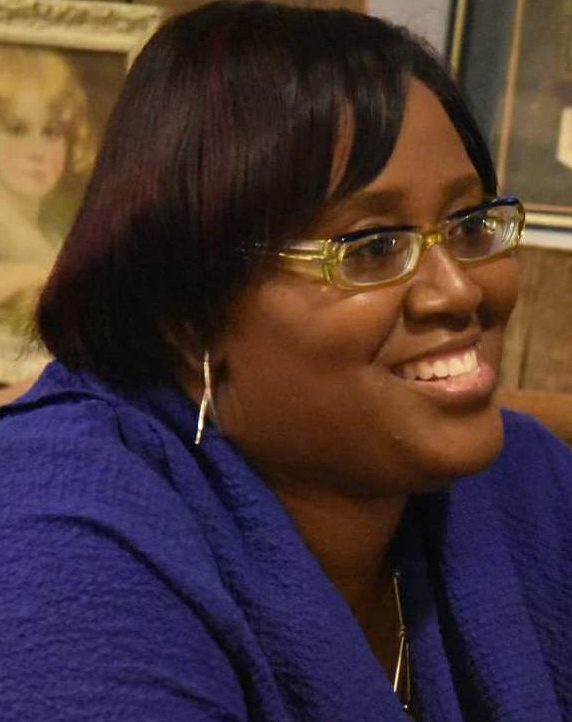 Rockett (pictured), “one of very few African American Tribune journalists, feels a unique responsibility to bridge the gap between the paper and communities of color. Rockett is recognized at the Tribune for her thoughtful efforts seeking inclusion for the myriad populations and diverse perspectives in the Chicago area.
Rockett (pictured), “one of very few African American Tribune journalists, feels a unique responsibility to bridge the gap between the paper and communities of color. Rockett is recognized at the Tribune for her thoughtful efforts seeking inclusion for the myriad populations and diverse perspectives in the Chicago area.
“For example, in September 2023, the Tribune published Rockett’s Underground Railroad Project, an on-going series detailing Illinois Underground Railroad historical sites and highlighting the stories of Illinois’ freedom seekers and their descendant family narratives,” the suit says.
“In her 13 years with the Tribune, Rockett has received a single raise.”
Rockett has been selected for a 2025 Nieman fellowship.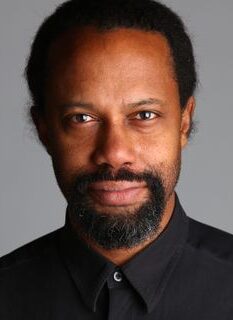 The complaint, filed in the U.S. District Court for the Northern District of Illinois, Eastern Division, says of James (pictured), “Despite his significant accomplishments and tenure at the Tribune, James has received only one significant pay raise since his hire.”
The complaint, filed in the U.S. District Court for the Northern District of Illinois, Eastern Division, says of James (pictured), “Despite his significant accomplishments and tenure at the Tribune, James has received only one significant pay raise since his hire.”
The three Black journalists join white photojournalist Stacey Wescott, who “is bilingual, having worked and studied in several Spanish-speaking countries,” according to the suit, and is a certified drone pilot; Colleen Kujawa, an Opinion content editor; Christy Gutowski, whose “editors have nominated her for a Pulitzer Prize on six different occasions,” according to the suit; and Madeline Buckley, who “during one shift . . . was carjacked while reporting for the Tribune on its overnight crime beat. Buckley’s reporting allowed the Tribune to give the public an on-the-ground picture of events that otherwise would not have been reported.”
The seven journalists represent a group of “greater than 50 individuals” through their class action suit, the complaint states.
“The legal action seeks back pay for most Black and female reporters at the newspaper over the past five years, and to remedy salary discrepancies for those currently working at the paper,” Laura Wagner reported Friday for The Washington Post.
“ ‘My beat has been about Black and Brown communities and inequities — the disparities, the wealth gap, homeownership, all of that,’ said reporter Darcel Rockett, one of the seven named plaintiffs. ‘And to report on this routinely and then, in your own house, for it to fall on deaf ears … it’s debilitating.’ “
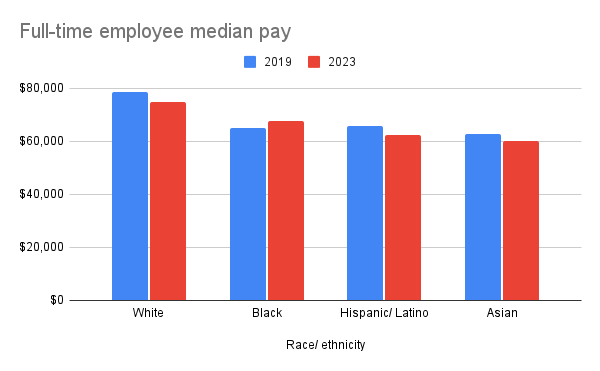
Credit: Chicago Tribune Guild
The lawsuit calls attention to two significant reasons for the pay disparity, based on reporting by the Chicago News Guild.
The Tribune “relied on diversity recruitment programs such as Metpro and Residency programs as a source of cheap labor to depress the salaries of women and minority journalists. The Chicago Tribune utilized the programs to
recruit talented, mostly women and minority, journalists into temporary year-long positions. In the program, the Residents were paid significantly less than their colleagues who performed the same work.
“If Residents were able to secure a full-time position after their temporary Residency ended, the Chicago Tribune used the Resident salary to anchor the employee’s starting salary. The stark gaps that emerge between the salaries of male or white reporters and the depressed salaries of female or African American reporters hired through the Metpro and Residency programs demonstrate that the Metpro and Residency programs are a source of the
pay discrimination.”
Also, “Defendants also intentionally hire women and African American employees from suburban newspapers – including ones they own – that they know pay much lower salaries than major newspapers. White employees, particularly white male employees, on the other hand, are more often recruited from other major news organizations and are offered higher salaries as a means to induce them to accept employment with Defendants. Plaintiffs are also informed and believe that Defendants rely on employees’ past salaries to determine pay, which institutionalizes and internalizes discriminatory pay disparities.”
Wagner wrote in the Post, “The suit is the latest escalation in the tensions between Alden Global Capital — which purchased the Tribune in 2021 on its rapid path to becoming one of the largest newspaper owners in the country — and the journalists who work for it. But it also represents years of frustration with past corporate owners. . . .”
The journalists are represented by Michael Morrison, who in 2020 secured a $3 million settlement from the Los Angeles Times “to resolve a class-action lawsuit brought by a multiethnic group of journalists who alleged that they were paid less than their white male counterparts,” as Meg James reported then for the Times.
The lead plaintiff in that suit was Bettina Boxall, who was “joined by reporters Greg Braxton and Paloma Esquivel; former reporter Angel Jennings; copy editor Angela Jamison; and Deputy Metro Editor Bobbie ‘B.J.’ Terhune,” James wrote. “Boxall and Terhune are white; Esquivel is Latina; and Braxton, Jennings and Jamison are Black.
“Under the settlement, all Black and Latino reporters, copy editors and line editors employed by The Times from Feb. 14, 2015, to Oct. 26, 2020, could receive a portion of the award.”
They did receive those portions when the settlement was approved in 2021, Morrison told Journal-isms.
Alden Global Capital could not be reached for comment.
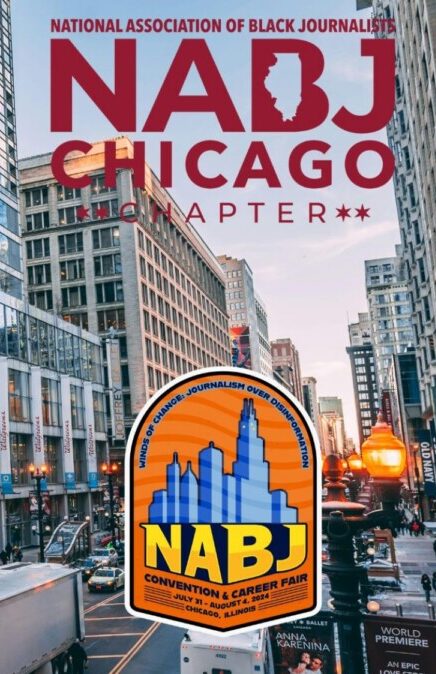 Brandon Pope, president of NABJ-Chicago, local chapter of the National Association of Black Journalists, told Journal-isms, “While we haven’t seen the lawsuit or know the specific details of the allegations,” as we have for decades, NABJ-Chicago stands with all journalists facing discrimination and inequity in their newsrooms. We believe in equal pay for equal work. We will be monitoring how this lawsuit plays out, and applaud the Tribune journalists for their zeal in speaking out.”
Brandon Pope, president of NABJ-Chicago, local chapter of the National Association of Black Journalists, told Journal-isms, “While we haven’t seen the lawsuit or know the specific details of the allegations,” as we have for decades, NABJ-Chicago stands with all journalists facing discrimination and inequity in their newsrooms. We believe in equal pay for equal work. We will be monitoring how this lawsuit plays out, and applaud the Tribune journalists for their zeal in speaking out.”
The Chicago Tribune Guild issued this statement:
 “Chicago Tribune Guild Chair Jake Sheridan offered strong support for the seven journalists who filed a lawsuit Thursday accusing the newspaper’s owners of knowingly paying female and Black journalists less than their male and white colleagues for the same work.
“Chicago Tribune Guild Chair Jake Sheridan offered strong support for the seven journalists who filed a lawsuit Thursday accusing the newspaper’s owners of knowingly paying female and Black journalists less than their male and white colleagues for the same work.
“All seven plaintiffs are members of the Chicago Tribune Guild.
“ ‘Even though the lawsuit is not a Guild action, pay equity is something that the Guild has long fought for,’ Sheridan said. ‘These courageous plaintiffs have the backing and admiration of our entire Guild. We stand alongside them and demand the company address this indefensible wage gap immediately.’
“The Chicago Tribune Guild raised the issue of systemic salary inequities with the company nearly a year ago, after a pay study showed the median pay of female journalists was less than 75 cents per dollar of male median pay. The analysis also showed that for every dollar it pays white full-time workers, Alden pays the guild’s Asian journalists at only 80 cents, Hispanic or Latino journalists at 83 cents and Black journalists at 90 cents.
“Chicago Tribune owners, Alden Global Capital, have repeatedly denied any systemic problems exist.
“ ‘With the filing of this Equal Pay lawsuit, our journalists have challenged Alden’s ridiculous and illegal standard for addressing discrimination at the Chicago Tribune,’ Sheridan said. ‘While our friends await their day in court, we demand Alden return to the bargaining table and offer a reasonable contract that pays all of our journalists fairly.’ ”
- Journal-isms: J-Group Says Hedge-Fund Papers Unwelcome (March 3).
- Journal-isms: 200 Strike 7 Hedge-Fund-Owned Newsrooms (Feb. 1) (scroll down)
- Journal-isms: Chicago Tribune Called Out on Diversity (Dec. 24, 2020)
- Journal-isms: Guild to Seek Data on Race, Gender Pay Gaps (April 2, 2016)
NABJ’s ‘Journalist of the Year’ Is a Podcast
May 12, 2024
>Hip-Hop Is Touchstone for ‘Louder Than a Riot’
Kim Godwin Said to Have Lost Newsroom Support
Why Don’t Media Do More on Anti-Democracy Moves?
No, ‘Hold On, I’m Comin’ ‘ Isn’t a Pro-Trump Song
Even 58 Percent of Whites Say Diversity is Lacking
49 Win Fellowships to Study Hot-Button Issues
Peabodys Honor Project Inspired by Rodney King Beating
Israeli Ousting of Al Jazeera Long in the Making
Where to Find News, Not Propaganda, About Cuba
Journalists Increasingly Targeted by African Armies
Navajo Journalist Creating Database of the Missing
Short Takes: Grants for HBCU newsrooms; Daisy Bates statue; Fabiola Santiago; NBC News and buried Mississippi bodies; National Association of Hispanic Journalists; National Headliners Awards; Juan Williams and NPR; Corky Lee; NNPA and menthol ban; Black Public Media and Puerto Rico’s environmental racism;
Sunset for discounted internet access; Conway Gittens; Cheryl Devall; Lynsey Chutel; working in exile for the BBC; helping exiled Afghan journalists; declining press freedom in India, Kenya, Burkina Faso; continuing Mexican journalist murders
Support Journal-ismsDonations are tax-deductible.

Hip-Hop Is Touchstone for ‘Louder Than a Riot’
In a departure from a practice dating to 1979, the National Association of Black Journalists is giving its “Journalist of the Year” award not to a journalist, but to a podcast — and one that has been canceled, at that.
The winner, NABJ announced Tuesday, is “Louder Than A Riot,” hosted by Rodney Carmichael and Sidney Madden, (pictured below, left to right) which was canceled in NPR’s March 2023 layoffs, though its hosts remain on NPR staff and the podcasts from its two seasons are still available.
“This award recognizes a Black journalist who has distinguished themselves with a body of work, a story, series or photographs published or aired that was extraordinary in depth, scope or significance to people in the African Diaspora,” NABJ said.
 “Louder Than A Riot has traced the collision of rhyme and punishment across two seasons, using the cultural lens of Hip-Hop to expose how mass incarceration and misogynoir impact Black America. From highlighting Hip-Hop’s missed opportunity for a ‘me too’ reckoning to unearthing the racist roots of criminalizing rap lyrics. Louder has been cited for its outstanding cultural reporting by The New York Times, Essence and TIME.”
“Louder Than A Riot has traced the collision of rhyme and punishment across two seasons, using the cultural lens of Hip-Hop to expose how mass incarceration and misogynoir impact Black America. From highlighting Hip-Hop’s missed opportunity for a ‘me too’ reckoning to unearthing the racist roots of criminalizing rap lyrics. Louder has been cited for its outstanding cultural reporting by The New York Times, Essence and TIME.”
When the series debuted in 2020, NPR Public Editor Kelly McBride of the Poynter Institute called the show “a significant piece of journalism, told in the language and culture of those affected by the story. And it’s amazing.”
Carmichael and Madden “are still on staff and covering hip hop for NPR Music,” said NPR spokeswoman Isabel Lara.
NABJ also announced seven new inductees, association veterans, for its Hall of Fame: Vanessa Williams, Barbara Ciara, Paula Williams Madison, Retha Hill, Art Norman, Milbert O. Brown Jr., Ed.D, and Alexis Yancey.
Other awardees:
- Angelo B. Henderson Community Service Award — Tenikka Smith Hughes, “founder of Tenikka’s Books for Kids, an annual book drive helping to prevent the ‘summer slide,’ where kids lose two to three months of what they learned in school.”
- Best Practices Award — Staff of Capital B, “an award-winning nonprofit news organization that centers Black voices, producing in-depth journalism on topics of crucial importance to Black people across the country.”
- Chuck Stone Lifetime Achievement Award — Michelle V. Agins, “a Pulitzer Prize-winning photojournalist who is the second Black woman ever hired (in 1989) as a staff photographer at The New York Times.”
- Ida B. Wells Award — Damaso Reyes, “Executive and Investigative Editor at the New York Amsterdam News and the founding Editor of its Blacklight Investigative Unit.”
- Journalism Educator of the Year Award — Ava Thompson Greenwell, Ph.D., who “has taught broadcast reporting and producing classes at the Medill School of Journalism at Northwestern University since 1993.”
- Journalist of Distinction Award — Gary Lee, managing editor of the Oklahoma Eagle, one of the oldest U.S. Black newspapers; staff writer for TIME magazine and correspondent for The Washington Post.
- Legacy Award — Roy Lewis, “a renowned photographer and activist” based in Washington, D.C.
- Michael J. Feeney Emerging Journalist of the Year Award — Corey Antonio Rose, a producer for NPR’s “It’s Been A Minute,” vice-chair of NABJ LGBTQ+ Task Force.
- Percy Qoboza Foreign Journalist of the Year Award — Roberson Alphonse, “one of Haiti’s most respected investigative journalists,” who “is not only a fearless journalist but a brave soul. He survived a shooting attack in 2022 that left him wounded in both arms on his way to work at a Port-au-Prince radio station. Now a University of Michigan Knight-Wallace Fellow.”
- Patricia “Pat” L. Tobin Media Professional Award — Kimberley and David Rudd, who “co-own Rudd Resources, a full-service, award-winning public relations agency that handles public affairs, community engagement and storytelling for philanthropic, nonprofit, government, and corporate clients.”
- Student Journalist of the Year Award — Domonique Tolliver, recent graduate of Loyola University New Orleans who led The Maroon, winner of the Radio Television Digital News Association’ Edward R. Murrow award.
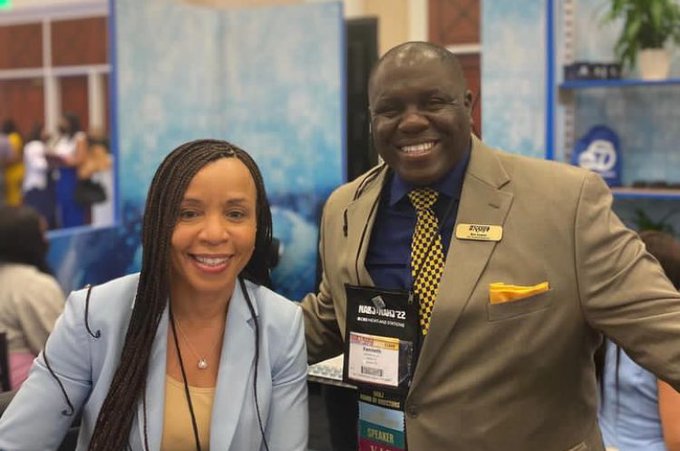
NABJ President Ken Lemon, pictured with Kim Godwin, said, “She is a rock star in the industry, leading the nation’s national news leader.” (Credit: X)
Kim Godwin Said to Have Lost Newsroom Support
The leadership of the National Association of Black Journalists did not respond when asked whether it knew that ABC News President Kim Godwin was preparing to resign when NABJ issued its Saturday characterization of Godwin’s tenure as “such a historic moment for Black women in news leadership.” But NABJ President Ken Lemon took to social media two days later, on May 6, to reiterate his support for her.
“I’m disheartened to hear about @KimGodwinTV ’s retirement as President of ABC News and wish her the best. She is a rock star in the industry, leading the nation’s national news leader. Kim has gone above and beyond to inspire Black journalists. She is a major supporter of @NABJ and projects that uplift members. Her impact resonates and I believe she will continue to make a difference.”
Dylan Byers, writing for Puck, told his readers Wednesday that Godwin’s tenure at what some have called a network known for executive infighting had effectively ended Friday night, the day before NABJ issued its statement.
“Godwin’s allocation of not just one but two camera crews to the event, ostensibly to cover the reveal of a record-high $237 million donation to the school, struck some producers and assignment editors as, frankly, ridiculous. FAMU was Godwin’s alma mater, as no one at ABC needs reminding, and her obsession with the school -— manifested in staff-wide school swag handouts and a few too many internship offers —- was seen as one of the cringiest aspects of her egocentric leadership, perhaps a sign that she was angling for a Board of Trustees chair. Meanwhile, amid all the late-stage-linear belt-tightening, ABC producers had been fighting for higher budgets on major stories of national significance — like, you know, the Trump trial.
“In a way, the FAMU assignment was the perfect coda to Godwin’s embattled tenure, which effectively ended on Friday night after Disney Entertainment co-chair Dana Walden and news group president Debra OConnell decided there was no longer any point in delaying the inevitable. By that point, a spate of recent news reports on the internal frustrations, including my previous email, seemed to have accentuated the need for a swift reorganization. . . . “
NABJ’s May 4 statement said, “There seems to be an intentionality to cite anonymous sources as Godwin’s detractors, coupled with the use of derogatory or stereotypical terms to describe her. Meanwhile, these reports are totally ignoring sources and facts that speak to Godwin having significant support inside the organization.”
Before Byers’ Wednesday piece, other newsroom sources complained with anonymity to such outlets as the New York Post, Vanity Fair and CNN that Godwin wasn’t a good fit for the job.
Byers wrote, “In actuality, Godwin had been let go because Walden and OConnell had determined she was a bad leader who had long ago lost the newsroom.”
In another context, former CNN President Jeff Zucker Thursday told The Wall Street Journal’s CEO Council, “I do think that leadership matters. And I think we’ve seen what happens when newsrooms and news organizations don’t have good leadership. Leadership matters. And you especially see it when you don’t have it.”
- Stacy M. Brown, National Newspaper Publishers Association: Diversity Dilemma: Kim Godwin’s Exit from ABC Sparks Debate on Black Leadership in Television News
- Oliver Darcy, CNN: Embattled ABC News President Kim Godwin steps down after tumultuous run
- Liz Elting, Forbes: Kim Godwin Exits ABC — Are Companies Setting Women Up To Fail?
- AJ McDougall, Justin Baragona, Corbin Bolies, Fletcher Peters, Daily Beast: Chaos at ABC News as Embattled Boss Kim Godwin Steps Down
- Brian Steinberg, Variety: Kim Godwin’s Exit Raises New Questions About ABC News’ Future
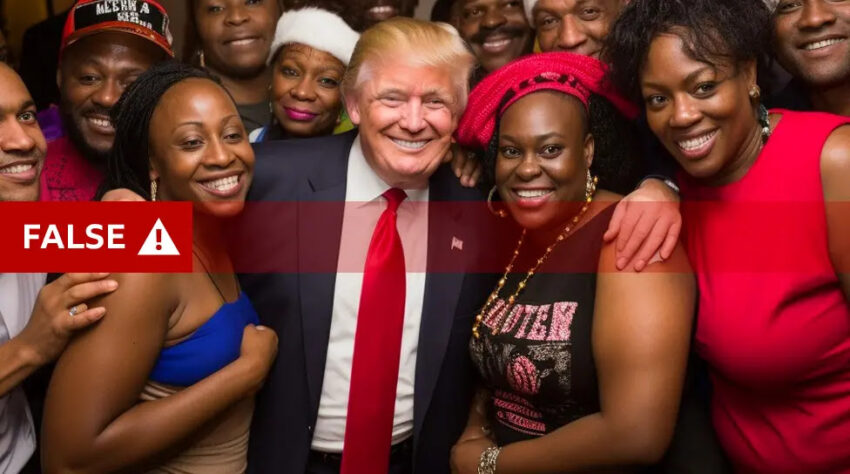
This image, created by a radio host and his team using AI, is one of dozens of fakes portraying Black Trump supporters, the BBC reported.
Why Don’t Media Do More on Anti-Democracy Moves?
“In the 20th Century, Communist Party propaganda was overwhelming and inspiring, or at least it was meant to be. The future it portrayed was shiny and idealized, a vision of clean factories, abundant produce, and healthy tractor drivers with large muscles and square jaws,” Anne Applebaum writes in an email promoting her 8,000-word piece in the Atlantic, “The New Propaganda War: Autocrats in China, Russia, and elsewhere are now making common cause with MAGA Republicans to discredit liberalism and freedom around the world.”
“In the 21st century, authoritarian propaganda, whether coming from Russia, China, or the American far-right, has a very different goal: to create fear, cynicism, nihilism, and apathy. The point is to convince Americans that their democracy is degenerate, their elections illegitimate, their civilization dying. This story is told not only by Russian and Chinese bots and anonymous trolls, but by leading members of the Republican party, including the presidential candidate himself.”
It has been reported that such propagandists specifically target African Americans, Latinos and immigrants, and Applebaum’s piece goes into detail about China’s disinformation efforts in Africa, aided by some of Africa’s homegrown rulers.
For example, Applebaum writes, “The United Front, the fulcrum of the Chinese Communist Party’s most important influence strategy, seeks to shape perceptions of China around the world by creating educational and exchange programs, controlling Chinese exile communities, building Chinese chambers of commerce, and courting anyone willing to be a de facto spokesperson for China.
“The Confucius Institutes are probably the best-known elite Chinese influence project. Originally perceived as benign cultural bodies not unlike the Goethe-Institut, run by the German government, and the Alliance Française, they were welcomed by many universities because they provided cheap or even free Chinese-language classes and professors. Over time, the institutes aroused suspicion, policing Chinese students at American universities by restricting open discussions of Tibet and Taiwan, and in some cases altering the teaching of Chinese history and politics to suit Chinese narratives. They have now been mostly disbanded in the United States. But they are flourishing in many other places, including Africa, where there are several dozen.”
CNN media writer Oliver Darcy added Tuesday, “Bizarrely, though, despite the clear toll that the lies promoted by [Donald] Trump and his propaganda servants are taking on American society, the legacy news media continues to largely turn a blind eye to the story. You won’t find evening news anchors like David Muir, Lester Holt, and Norah O’Donnell regularly covering the destructive lies unleashed upon the public by MAGA Media. Outlets such as The New York Times and The Washington Post inexplicably decline to even identify networks such as Fox News as ‘right-wing’ in their news reporting.
“And yet, it’s not possible to actually understand the biggest issues of our time without understanding the propaganda pipeline poisoning the information well. It is not possible to understand why Congress struggled to pass Ukraine funding without knowing how figures such as [Tucker] Carlson helped spread Russian propaganda to the masses. It is not possible to understand why most of the country does not believe the election results without understanding the role MAGA Media played in undermining the elections system. It is not possible to understand why Trump continues to hold a firm grip over the Republican Party without understanding the propaganda machine at his disposal.
“When I asked her why the establishment press is not more aggressively covering the story of our time, Applebaum, however, appeared stumped.
” ‘I don’t know why it’s not covered more,’ the celebrated writer candidly told me. ‘It seems to me to be one of the very central issues of modern society.’ “
- Dancan Bwire, Africa Check: Viral image does not show Kenya’s former electoral commission chair Wafula Chebukati in hospital
- El Diario, Argentina: Telesur denounces media censorship for going off the air on Open Digital Television in Argentina
- Sarah Ellison and Clara Ence Morse, Washington Post: How Trump’s allies amplify his Truth Social messages to the wider world
- Luke Johnson, Columbia Journalism Review: After eight years of propaganda, can Polish journalists regain public trust? (May 13)
- Journal-isms: People of Color Too Trusting of Social Media? (May 5)
- Wanjiru Kamau, Africa Check: Disregard claims that floods in Kenya’s capital have swept crocodiles and venomous snakes into the streets
- Attila Mong, Committee to Protect Journalists: Serbia, a ‘witch-hunt’ for journalists who don’t toe government line
- Reporters Without Borders: Ten years of war in Donetsk and Luhansk: the disappearance of independent journalism and the proliferation of Russian propaganda media
- Marianna Spring, BBC Panorama and Americast: Trump supporters target black voters with faked AI images (March 4)
Isaac Hayes’ estate says, “We and our partners . . . will be taking steps to stop the unauthorized use of this song.”
No, ‘Hold On, I’m Comin’ ‘ Isn’t a Pro-Trump Song
NPR listeners who heard a report on the nature of Donald Trump rallies Thursday might not have known that Trump ends his rallies with the 1966 classic “Hold On, I’m Comin’.”
That is true. But what was not reported was that use of the song, recorded by Sam Moore and Dave Prater, known as Sam and Dave, and written by Isaac Hayes and David Porter, all Black men, flouts the wishes of the Hayes estate. In fact, the estate has objected for some time.
“The estate and family of Isaac Hayes DID NOT approve the use of ‘Hold on I’m coming’ written by Isaac Hayes and David Porter by Donald Trump tonight at his Super Tuesday rally,” the estate tweeted March 5, Super Tuesday, on X.
“We and our partners at @primarywave will be taking steps to stop the unauthorized use of this song.”
The estate said much the same in 2022, before contracting with the Primary Wave firm.
 “For years Trump ignored pleas from a long list of famous acts to cease and desist from using their music during his rallies and political events and in addition to the costumed disco act, the legacy manager for Laura Branigan took issue with Trump playing her hit ‘Gloria’ at his final official appearance as well,” Billboard reported in November 2022.
“For years Trump ignored pleas from a long list of famous acts to cease and desist from using their music during his rallies and political events and in addition to the costumed disco act, the legacy manager for Laura Branigan took issue with Trump playing her hit ‘Gloria’ at his final official appearance as well,” Billboard reported in November 2022.
“Over the five years of his campaigns and presidency, artists ranging from Adele to Bruce Springsteen, Elton John, R.E.M., Aerosmith, Panic! at the Disco, Guns N’ Roses, The Rolling Stones, Rihanna and the estates of Leonard Cohen, Tom Petty and Prince have vociferously objected to Trump playing their music at his rallies.“
That Trump is using the music of Black men takes on added significance in light of reports of Trump’s appeal to some Black male celebrities.
In his new book, “The Moment: Thoughts on the Race Reckoning That Wasn’t,” Bakari Sellers, lawyer, former South Carolina state legislator and CNN analyst, writes of those Black men, “They say the Democrats are not fighting enough, and that the party does not give a damn about Black men; they only care about Black women.”
Of Stephen A. Smith, Ice Cube and Jason Whitlock, Sellers says, “Smith, Cube and Whitlock have been a staple of misinformation and disinformation. That they crave attention so much that they will push out half-truths and lies about Black men proves one very important truth: The situation that we are in is far more complex than we thought. It’s a conundrum that we might be strong and push back against, whether the lies are coming from Russia or from our own.”
A recent Wall Street Journal survey found more Black voters said they were leaning toward Trump than they did in 2020, including 30% of Black men (12% of Black men voted for Trump in 2020, according to AP VoteCast), and 11% of Black women (6% of Black women voted for Trump in 2020).
- J.R. Gamble, Shadow League: “Nobody In My Family Ever Will Vote Democrat Again” | Donald Trump Flips Lawrence Taylor at Rally Where Former President Calls Joe Biden “Total Moron” (May 13)
- Gerren Keith Gaynor, The Grio: Trump, who denigrated Black men, eyes young Black men as jurors in sex scandal trial (April 16)
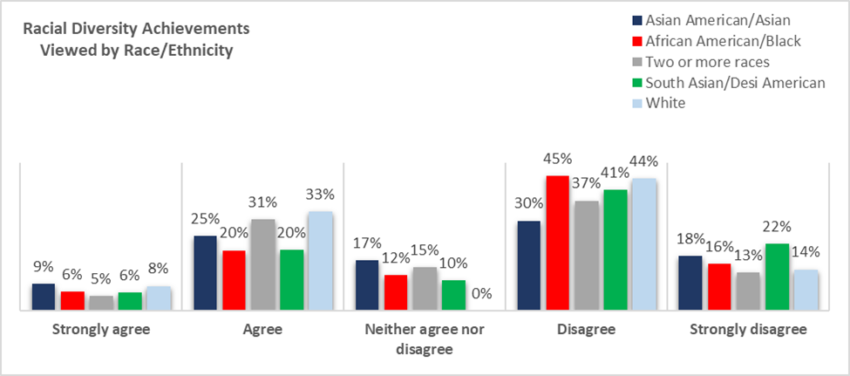
Even 58 Percent of Whites Say Diversity is Lacking
New surveys of Asian Americans and, separately, of journalists of all races, show that “News still matters, including TV news, with two out of three respondents saying media is very or critically important to democracy,” but that even 58 percent of whites think there is not enough newsroom diversity, the Asian American Journalists Association reported Thursday.
Its “Trusted Messengers and Priority Audiences” report was produced by AAPI Data, APIAVote and AAJA, and draws on Amplify AAPI at NORC at the University of Chicago, “the only public opinion panel of its kind that is multilingual and able to generate estimates of 6 Asian American subgroups as well as Pacific Islanders.”
The report gives “a granular look into the evolving news consumption habits of communities of color as well as the structural obstacles facing journalists of color.” Preliminary findings were shared at an April 26 gathering at a penthouse gathering at Washington Post offices.
“News media favorability is low, especially among younger respondents. And a majority believe social media and cable news are making democracy worse. Ethnic/community media still plays an important role in how respondents choose to stay informed.
“The younger the respondents, the more they value diversity in news coverage, staffing, and viewpoints.
“There were more similarities than differences in the responses among communities of color, with all groups reporting that political parties, family and friends, and mainstream media are their top sources of news and information that could guide voting. Black respondents also put community groups among their main sources of voting news and information.
“For news and information about life and social issues, AAPIs put the most trust in friends and family, professors and academic experts, and journalists from their community – and the least in sports personalities, celebrities, social media influencers and shock jock-type provocateurs. All racial groups put the same four categories at the bottom.
“Younger respondents have the lowest levels of trust in news media, but they haven’t shifted that trust to social media influencers, meaning news organizations still have an important role to play. Trust in a news outlet is boosted by fact-checking and reputation for all groups, and especially for AAPIs.
“The findings underline the importance of a diverse press corps to inform citizens in a multicultural democracy, yet that hasn’t translated into a smooth road for journalists of color. The second AAJA report, led by Rapid Research Evaluation and supported by TAAF [The Asian American Foundation], surveyed 549 working media professionals and followed up with 37 for focus groups and one-on-one interviews.
“A majority of respondents agree that their organization treats them with respect, that they feel they belong, and their organizations are becoming more equitable and inclusive places to work.
“Yet more than half don’t think their organizations are achieving sufficient racial diversity, showing a significant gap between personal and institutional progress.
“Structural obstacles include barriers to entry, pay inequity, and blocks to upward mobility. Gains in hiring since 2020 have been rolled back by layoffs.
“Solutions need to be both structural and personal. Organizations need to address pay inequity and obstacles to leadership. Mentors and professional associations also play an important role.
“The focus groups and interviews deepened the insights. Respondents note how hard it is to launch a career when some internships pay nothing and entry-level jobs in journalism pay so little that anyone with student debt can’t afford them. This deprives journalism of people from lower socioeconomic backgrounds, disproportionately people of color.
“At higher levels, respondents report pay disparities they perceive as related to race. And several journalists of color report needing to be ‘overqualified’ to get their jobs. Mentorship, sponsorship, and support from professional associations such as AAJA were described as being essential to stay in the field. . . .”
- Sneha Dey, Texas Tribune: Texas’ DEI ban almost ended cultural graduations. Latina students at UT-Austin fought to keep theirs.
- Simone Foxman, Bloomberg: Ackman Scolded Over DEI Views at Closed-Door Milken Session
- Johannes Lenhard, Fast Company: What we lose when we cut D and E from DEI
- Eric Ortiz, LinkedIn: Diversity Presents Limitless Possibilities (includes Journal-isms Roundtable video)
- Emily Stewart, Business Insider: Woke no more: Companies were starting to support political causes. Now they’re too scared to speak up.
- Taylor Telford and Julian Mark, Washington Post: DEI is getting a new name. Can it dump the political baggage?
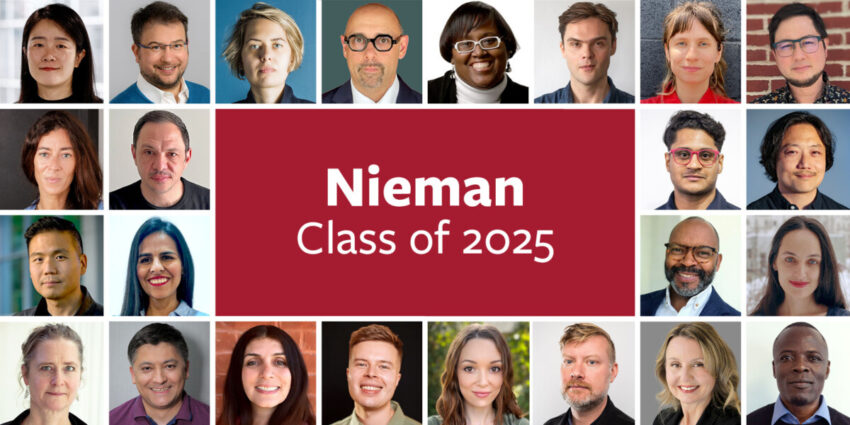
49 Win Fellowships to Study Hot-Button Issues
The major fellowship programs for mid-career journalists — the Nieman Foundation at Harvard, The John S. Knight Journalism Fellowships at Stanford and the Knight-Wallace Journalism Fellowship program at the University of Michigan — announced their classes this week for the 2024-25 school year.
“We live in an era where so many factors – from AI to misinformation, broken business models and broken trust with communities – are transforming the journalism industry, some of them threatening democracy,” JSK Director Dawn Garcia said in a news release. “We’re eagerly announcing this group of journalism change agents who want to use their experience and enterprising spirit to do something about it.”
The fellows “will pursue ambitious journalism projects, immerse themselves in university courses and participate in weekly seminars with journalism leaders, renowned scholars, media innovators and social change agents,” said the announcement from the Wallace House Center for Journalists and the University of Michigan. All receive stipends.
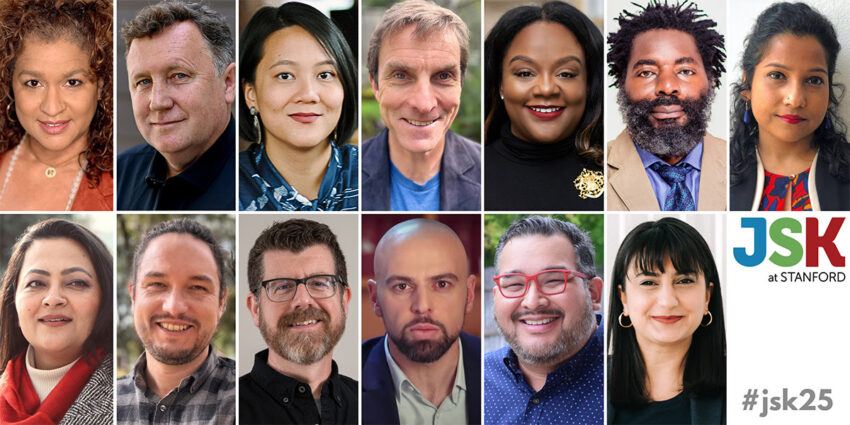
Some of the recipients:
- Tyrone Beason, one of 24 selected for a Nieman: a “writer for the Los Angeles Times’ environment, climate, health and science team whose work includes reporting on Indigenous land issues. He will study land reclamation efforts and conservation movements in the U.S. as well as the roles of race and identity in our political discourse.”
- Tamoa Calzadilla, one of seven U.S. fellows chosen by JSK at Stanford, who is “editor-in-chief of Factchequeado, a collaborative initiative to fight misinformation and disinformation in Latino and Spanish-speaking communities in the United States.”
- Bettina Chang, JSK: “co-founder and Chicago programs lead of City Bureau, a civic journalism lab focused on community engagement, participatory journalism and racial equity. . . . Chang edited ‘Missing in Chicago,’ an investigation by City Bureau and the Invisible Institute that was awarded the 2024 Pulitzer Prize in Local Reporting. She is passionate about working with journalists of color to help them effect the change they want to see in the world.”
- Dieu-Nalio Chery, one of 18 selected for Michigan: “Chery will continue to photograph Haitian-American communities in the U.S., crowd-sourcing family photos as well as curating images found in attics, basements, churches and universities. His work will illuminate the larger story of the Haitian diaspora and combat common stereotypes. . .”
- Jesselyn Cook, Nieman: “an Atlanta-based reporter and author, will examine how to improve children’s access to quality news, shield them from fake news online and proactively forge a healthier relationship between the next generation and media.”
- Anna Filipova, Nieman: “visual journalist and filmmaker who lives in the Arctic, will study climate change and globalization and examine new technologies to aid storytelling about the polar regions.”
- Candice Fortman, JSK: “executive director of Outlier Media, a non-profit newsroom that centers and responds to the needs of Detroit residents.” Fortman announced on LinkedIn Monday, “after five incredible years at Outlier Media , I will be stepping away from my role as executive director in August. More exciting is that Orlando Bailey will be my successor!”
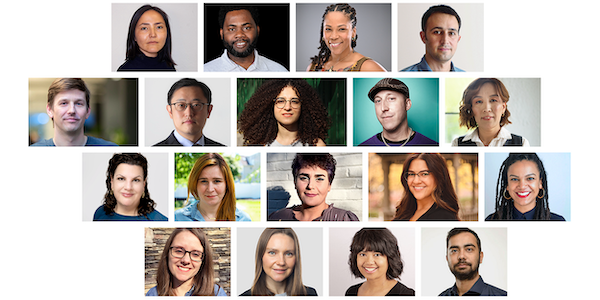
Knight-Wallace Fellows at the University of Michigan.
- Fatemeh Jamalpour, Michigan: An “Iranian journalist who has been interrogated, arrested and jailed by the Iranian government because of her human rights-focused reporting. . . .”
- Zahra Nader, Michigan: “founding editor-in-chief of Zan Times, a nonprofit news outlet that covers human rights in Taliban-controlled Afghanistan, with a focus on women and gender-based issues.”
- Diana Durán Nuñez, Nieman: “Most recently a reporter for the TV news magazine ‘Los Informantes’ on Caracol Televisión in Colombia and for The Washington Post, will research recent human rights abuses by Latin American governments carried out under the guise of legal operations.”
- James Okong’o, Nieman: “a digital reporter for Agence France Presse in Kenya, will study the relationship between online influence and coordinated disinformation campaigns in sub-Saharan Africa with a focus on operations to weaponize information in Kenyan elections.”
- Darcel Rockett, Nieman: “a senior journalist at the Chicago Tribune, will examine the impact of the Supreme Court’s reversal of affirmative action in higher education and the repercussions of the decision on the future of the Black middle class.”
- Joe Ruiz, JSK, based in San Antonio, Texas: “a managing editor at CBS News where he oversees the network’s digital news platforms.” Ruiz wrote that he plans to “work on my project on improving mental health in journalists of color and keeping us in newsrooms.”
- Marcus Yam, Nieman: “a foreign correspondent and photojournalist with the Los Angeles Times, will explore new frameworks for covering war and fostering empathy and undertake studies in a range of writing genres including narrative storytelling and opinion writing.”
Peabodys Honor Project Inspired by Rodney King Beating
The Peabody Awards Board of Jurors Thursday announced the 34 winners elected to “represent the most compelling and empowering stories released in broadcasting and streaming media during 2023. The winners were chosen by a unanimous vote of 32 jurors from over 1,100 entries from television, podcasts/radio, and the web/digital in entertainment, news, documentary, arts, children’s/youth, public service, and interactive programming.”
Racial and other social issues were well represented, from an investigation of a candidate with white supremacist ties in Nashville to a six-part micro-documentary series called “The Hidden History of Racism in New York City.” For the full range, see the accompanying video.
One project was singled out for the Peabody awards’ first special “Global Impact Award.“
“In 1992, one year after the world witnessed the civilian video recording of L.A. police brutality against Rodney King, the organization WITNESS was co-founded by musician and activist Peter Gabriel, the Reebok Foundation, and the Lawyers Committee for Human Rights on the prescient premise that ordinary people using video to expose human rights violations could influence policy and create change, as well as save lives. For over three decades, WITNESS has led a global movement to help people harness video and emergent technologies as tools to protect and defend human rights.
“In their first decade, WITNESS provided video equipment and training to a broad range of activists – including those fighting for the rights of women in Afghanistan, forcibly disappeared youth in India, and Indigenous peoples in the Philippines, among many others. But WITNESS recognized early on that to be effective, it would take more than simply putting cameras into the hands of people, creating, as well, online platforms, mobile apps, media labs, and instructional guides in a much broader effort to train, educate, and provide resources to human rights activists worldwide. Today, this online resource library offers instruction to millions of people about how to shoot, edit, preserve and distribute human rights video for maximum impact, much of which is now available in 24 languages.
“The impact of this work has been immense, including results such as convicting a warlord at the International Criminal Court; exposing sectarian violence, sex trafficking, and forced evictions; and establishing legal protections for some of the world’s most vulnerable people, from trash pickers in Delhi to elderly Americans at risk of financial, emotional, and physical abuse. . . .
“What is more, WITNESS is now at the forefront of conversations on the impacts of Artificial Intelligence through global convenings, advising platform oversight committees, presenting findings and testifying at government hearings worldwide. . . .”
- Black Public Media: AfroPoP XV Title Can You Bring It: Bill T. Jones and D-Man In The Waters is a Peabody Winner! Plus VIdeo (YouTube)
- Michael Malone, Broadcasting & Cable: KXAS Dallas-Fort Worth, WTVF Nashville Pick Up Peabody Awards
- Stephanie Sy with Ken Doctor and Andrew Fan, “PBS NewsHour”: Editors of small news sites on winning Pulitzer Prizes and the future of local reporting (May 14)
- WGBH, Boston: GBH Honored with Five Peabody Awards
- WTVF-TV, Nashville: NewsChannel 5 honored with coveted Peabody Award for Gabrielle Hanson investigation
- Washington Post: The Washington Post Wins Two 2024 George Foster Peabody Awards
Haaretz columnist Gideon Levy condemns Al Jazeera shutdown. (Credit: YouTube)
Israeli Ousting of Al Jazeera Long in the Making
“When Israel ordered Al Jazeera on Sunday to shut down operations there, the network had a reporter covering a government meeting in West Jerusalem, another in an East Jerusalem hotel room, a third in northern Israel to cover clashes on the border with Lebanon and a fourth in Tel Aviv,” Vivian Yee, Emma Bubola and Liam Stack reported Thursday for The New York Times.
“But the cameras stopped rolling when Walid al-Omari, the network’s bureau chief in Ramallah, in the West Bank, ordered all of them to go home. Israeli authorities descended on a room used by Al Jazeera in the Ambassador Hotel in East Jerusalem, confiscating broadcast equipment. Israeli television and internet providers cut off its channels and blocked its websites, though people were still able to find it online.
“Al Jazeera, the influential Arab news network, says it will continue reporting and broadcasting from the Gaza Strip and the West Bank. But its departure from Israel marks a new low in its long-strained history with a country that much of Al Jazeera’s audience in the Arab world and beyond sees as an aggressor and an occupier.
“The shutdown order, which lasts 45 days and can be renewed, was a break long in the making. . . .”
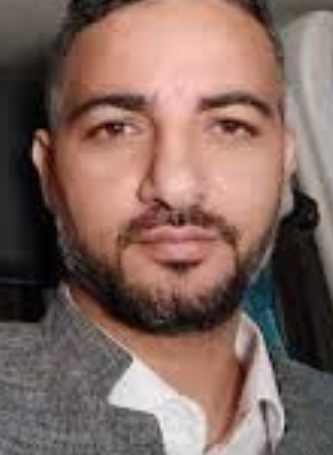 Meanwhile, “According to a statement from the government media office in the blockaded enclave on Saturday, one more Palestinian journalist has been fatally injured due to an Israeli airstrike in the Gaza Strip. Bahaa Okasha (pictured), a photojournalist for Al-Aqsa media network, lost his life along with his wife and children in an Israeli airstrike on their home in the northern Gaza Strip’s Jabalia camp.”
Meanwhile, “According to a statement from the government media office in the blockaded enclave on Saturday, one more Palestinian journalist has been fatally injured due to an Israeli airstrike in the Gaza Strip. Bahaa Okasha (pictured), a photojournalist for Al-Aqsa media network, lost his life along with his wife and children in an Israeli airstrike on their home in the northern Gaza Strip’s Jabalia camp.”
Preliminary investigations by the Committee to Protect Journalists show that as of May 11, “at least 97 journalists and media workers were among the more than 35,000 killed since the war began on October 7 — with more than 34,000 Palestinian deaths in Gaza and the West Bank and 1,200 deaths in Israel.”
- Committee to Protect Journalists: Why impact of Israel-Gaza war has become harder to document
- International Federation of Journalists: Israel: Al Jazeera shutdown is dangerous and wrong
- International Press Institute: IPI condemns Israel’s closure of Al Jazeera; Decision sends a chilling message to all media in the country
- Harrison Jones, BBC: Israeli police raid studio linked to Al Jazeera
- Tom McRae with Ronnie Kasrils, Maria Ressa and Jonathan Dagher, “Inside Story,” Al Jazeera: What are the implications of Israel’s ban on Al Jazeera? (video)
- Santul Nerkar, New York Times: Frustrated by Gaza Coverage, Student Protesters Turn to Al Jazeera
- Elena Novak, National Writers Union: NWU Report Details Retaliation Against Western Media Workers Speaking Out on Gaza War
- Serge Schmemann, New York Times: Israel Shutters One of Its Few Links to the Arab World
- Seth Stern, the Guardian: Israel is banning Al Jazeera, America is banning TikTok. We know why
- Erik Wemple, Washington Post: Israel’s shameful ban on Al Jazeera
- Nagham Zbeedat, Haaretz: ‘What Surprises Me Is How It Managed Until Now’: Palestinians React to Israel’s Shutdown of Al Jazeera
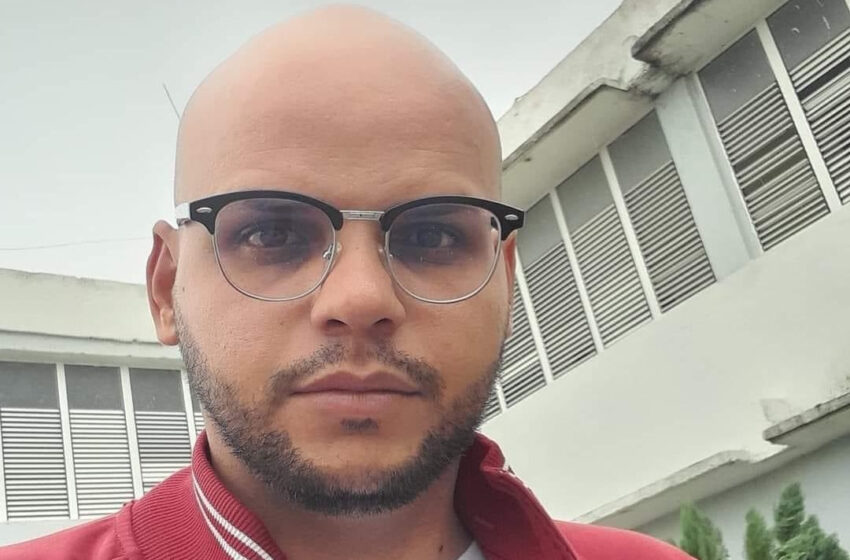
Freed after five days of imprisonment, independent Cuban journalist José Luis Tan Estrada told CubaNet, “I felt very afraid and thought they were going to leave me there. . . . Psychologically I stayed strong, I gave myself therapy so that when I came out I could bear witness to what one goes through there, to the repression one goes through there. It is psychological torture, from the jailer onwards . . . One, who I think was a captain, told me, ‘you’re going to rot here, worm.’ ” (Credit: Facebook)
Where to Find News, Not Propaganda, About Cuba
The message, translated here, came from Havana on Wednesday at 9:22 a.m.:
“I have been on the street since five in the morning to visit a friend, and at this time no bus has passed to take me on that route, a sea of people in the streets complaining about the disastrous transportation in the capital, well criticize this situation sir and everyone cannot rent from individuals, the shortest trip is 300 pesos [$12.60 U.S.], from where I live to my friend’s house it’s easy 500 pesos [$21 U.S.] round trip, everything here is a crisis sir.”
The writer, independent journalist Julio Antonio Rojas, was asked what Americans could do about this situation.
He replied:
“Sir, it is important that you can read the independent journalism agencies that write about these problems on the island, so that you can learn more closely about the true reality of the disaster that exists in this country, interact more with the lowest citizens of society, This will tell you the truth about what the lowest strata of society suffer, and in whatever way you can help those most in need, with food, medicine, any economic contribution where possible, it would always be well received.
“We Cubans are very grateful and some will realize that the North American people are not their enemies like the regime has always said.”
Rocío Baro Guerra, a native of Cuba and a Hubert H. Humphrey Fellow at the Cronkite School of Journalism and Mass Communication at Arizona State University, spoke at the Journal-isms Roundtable on this subject in December [In Spanish here].
Baro agreed with Rojas. “Yes, that’s absolutely true,” she messaged. “The situation is more difficult every day and there are few services and products that the common man can afford/access in Cuba.
“Here is a list of some independent outlets, who do serious investigative journalism:
” https://periodismodebarrio.org
” https://revistaelestornudo.com
” http://eltoque.com “
Others include: https://www.cubanet.org/
https://www.cibercuba.com/
https://www.14ymedio.com/
Canada’s Public Health Agency Monday advised, “Exercise a high degree of caution in Cuba due to shortages of basic necessities including food, medicine and fuel.“
Meanwhile, Cuban authorities released local freelance journalist José Luis Tan Estrada after five days of detention, the Committee to Protect Journalists reported May 2.
“Several international organizations, activists and colleagues set off alarms about the ‘kidnapping’ of the independent journalist,” the website 14ymedio, founded by “groundbreaking Cuban journalist and entrepreneur” Yoani Sanchez, reported the same day from Havana.
“Among the NGOs that spoke out was PEN International. PEN’s Americas and Caribbean centers condemned the events on Saturday and called for the immediate release of the journalist, in addition to calling on the Cuban authorities to stop the harassment of critical voices in the country.
“On Tuesday, they were joined by the Committee [to Protect] Journalists, which requested the release of Tan Estrada and indicated that the Cuban authorities must allow ‘reporters to work without fear of reprisals.’ ”
- Carlos Manuel Álvarez, nocountrymagazine.com: Cuban Artist Luis Manuel Otero Interviewed from Prison
- Esteban Campanela and Sol Amaya, CNNE: Murders, imprisonment and violence: Threats to press freedom grow in Latin America (May 3)
- Juan Diego Rodríguez, 14ymedio: The Ten Cent of the 1950s, a capitalist symbol and now a ‘MSME’, returns to Cuba
- Alberto Mendez Castello, Cubanet: The totalitarian state and the failed nation: Cuba
- CubaNet: “You’re going to rot here, worm”: Testimony of José Luis Tan Estrada (May 2)
- Karel J. Leyva, 14ymedio: Cuba, a ‘Paradise’ That Is Beginning to Scare Canadians
- Eloy Viera Cañive (El Toque), Havana Times: Embargo or Not, Vehicle Trade from US to Cuba is Thriving
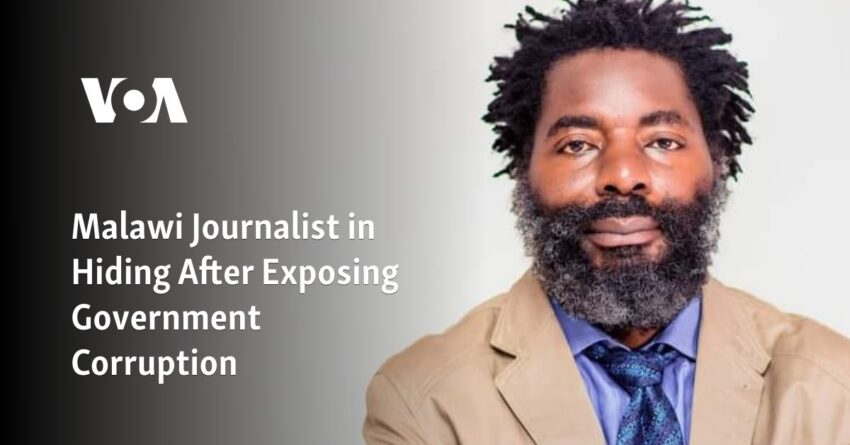
Gregory Gondwe, founder, editor and managing director of the Platform for Investigative Journalism in Malawi, is heading for the John S. Knight Journalism Fellowship Program at Stanford University after briefly going into hiding. (Credit: Voice of America)
Journalists Increasingly Targeted by African Armies
“When journalist Gregory Gondwe began investigating corruption in Malawi’s military two years ago, he devised a secure way to communicate with his whistleblower on the inside,” Zachariah Mushawatu reported April 3 for the Christian Science Monitor from Harare, Zimbabwe.
“When the source had information, they would log into an email account Mr. Gondwe created, draft an email, and then save it. Later, Mr. Gondwe would log in and read the draft. That way, there would never be a paper trail showing that the two of them had exchanged messages.’
“But when Mr. Gondwe opened the drafts folder on January 29, the day his story was published, he was greeted with a different kind of message. ‘Warning!’ it read, ‘The military has deployed intelligence officers to apprehend you and uncover [us]. If you are in the office, flee immediately and do not return home.’
“Mr. Gondwe heeded the advice and went into hiding. ‘In journalism, I’ve found not just a profession, but a calling to serve my nation … I will not apologize for this dedication,’ he wrote the following day on Facebook. ‘To those who disapprove: this commitment to truth is non-negotiable.’ “
Gondwe surfaced last month as the choice for the Lyle and Corrine Nelson International Fellowship for 2024-2025 by the John S. Knight Journalism Fellowships at Stanford University.
The Monitor story continued, “Mr. Gondwe isn’t the only African journalist who has been intimidated in recent months for investigating military corruption. Last August, reporter Karim Asaad was detained over a piece he wrote for the Egyptian fact-checking website Matsda2sh about the arrest of several people with military ties aboard a plane filled with cash and gold bars. And in February, journalists with the Zimbabwean site The NewsHawks were forced to drop an investigation about army corruption after the reporters were ‘put under surveillance’ by the government, according to the publication.
“These incidents point to a troubling trend. In many countries in Africa, there are few checks and balances on the power of the military. Investigative journalists are stepping in to act as watchdogs, but it often comes at great personal and professional cost.
“ ‘Put simply, there are more journalists being targeted by the army in recent times because there are more journalists conducting investigative journalism in general and … into the army in particular,’ says Mlondolozi Ndlovu, a media studies lecturer at the Christian College of Southern Africa in Harare. . . .”
- Alfred Chauwa, Nyasa Times: Malawi: President Chakwera Calls on Journalists to Tell the Malawi Story (May 2)
Navajo Journalist Creating Database of the Missing
“The Bureau of Indian Affairs reports that rates of violence on Native American reservations can be 10 times higher than national averages. However, there is a glaring data hole when it comes to records of those who are missing from reservations,” public radio’s “Here and Now,” originating at WBUR in Boston, reported May 3.
“One journalist who grew up on the Navajo Nation has set out to create a comprehensive database and hopefully bring awareness to issues long overlooked on the reservations.
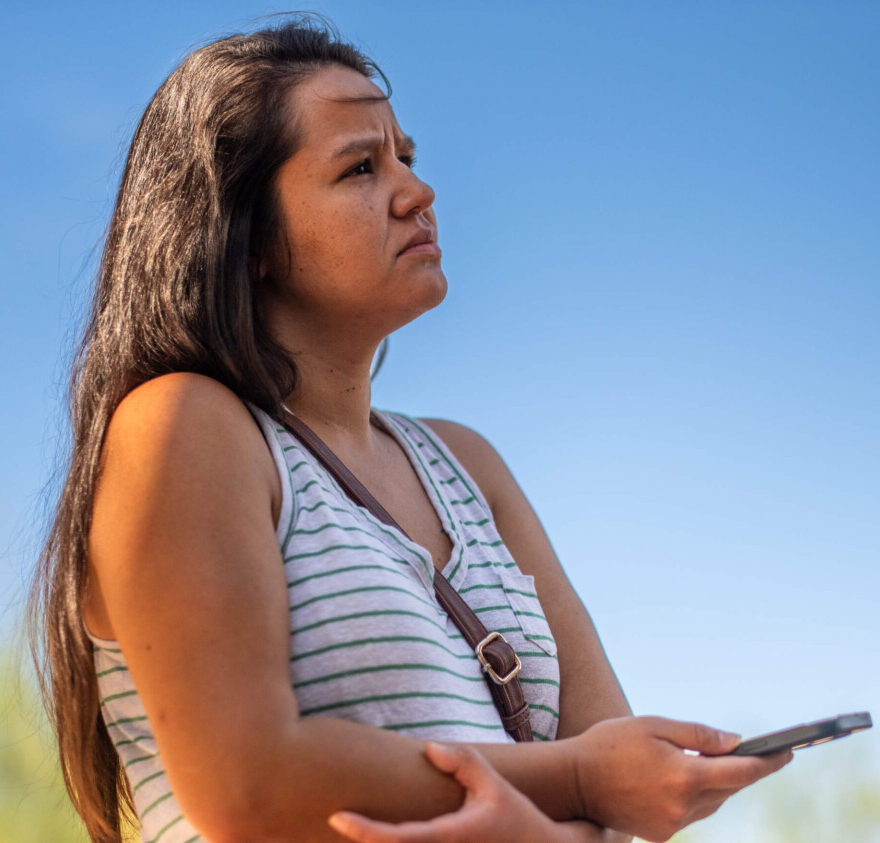 “Chelsea Curtis (pictured) is with the nonprofit newsroom Arizona Luminaria, supported by the International Women’s Media Foundation. She joins host Peter O’Dowd to tell him more about her project and some of the stories of those who are missing. . . .”
“Chelsea Curtis (pictured) is with the nonprofit newsroom Arizona Luminaria, supported by the International Women’s Media Foundation. She joins host Peter O’Dowd to tell him more about her project and some of the stories of those who are missing. . . .”
- Chelsea Curtis, Arizona Luminaria: 15 years after a 7-year-old’s life was taken, her light guides her family’s path forward (May 3)
- Jodi Rave Spotted Bear, Society of Professional Journalists: The missing and murdered Indigenous person crisis calls for Indigenous data sovereignty (March 16)
Short Takes
- “Ten student newsrooms at Historically Black Colleges and Universities (HBCUs) will receive nearly $200,000 to help improve campus newsroom technology, business operations, audience engagement and reporting,” Adria R Walker reported Friday for The Guardian. “The grants, given by the Center for Journalism & Democracy at Howard University via its Newsroom Innovation Challenge, were announced on Friday. “Howard University’s the Hilltop and HU News Service, and campus newsrooms at Morgan State University, University of the District of Columbia, Morehouse College, Florida A&M University, North Carolina A&T University, North Carolina Central University, Savannah State University and Texas Southern University will each receive award packages that range from $4,000 to $29,000 and a one-time technology award. . . .”
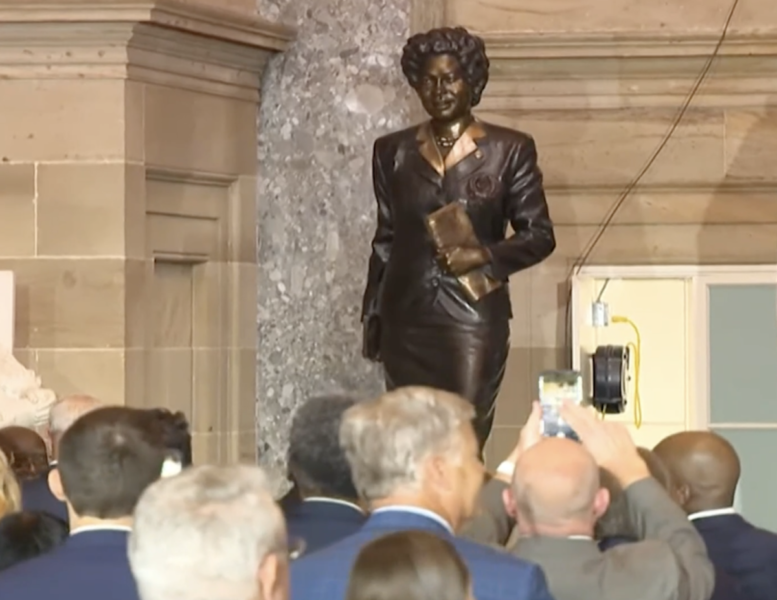
Daisy Bates is the third African American to have a statue installed in the U.S. Capitol’s Statuary Hall. (Screenshot from livestream)
- “More than a hundred people filled the pews at Little Rock’s Second Baptist Church Wednesday to watch the unveiling of civil rights leader Daisy Lee Gatson Bates’ statue in the National Statuary Hall” in Washington, the Arkansas Advocate reported Thursday. “Best known as a mentor to the Little Rock Nine, a group of African American students who integrated Central High School in 1957, Bates was also, along with her husband L.C. (Lucious Christopher) Bates, publisher of the Arkansas State Press, a newspaper focused on civil rights and other issues in the Black community. . . .”
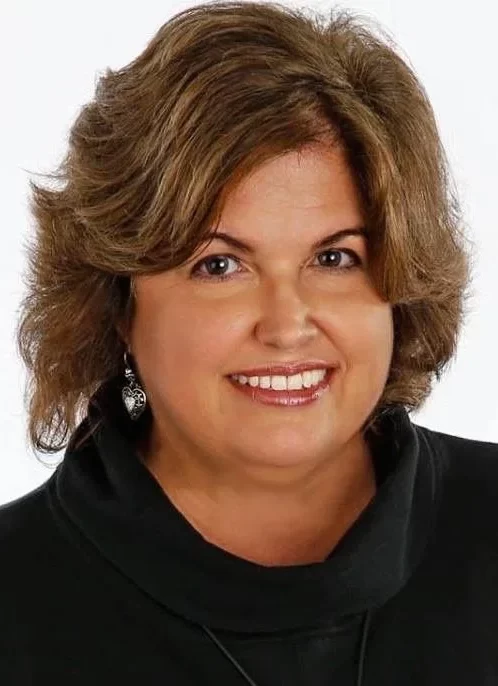 “It’s time to retire from a newspaper that, more than an employer, has been my longest-lasting place of residence, 44 years, and longest-lasting relationship, a marriage more durable than the one my college sweetheart and I registered at the Miami-Dade Courthouse during the heady summer days of historic 1980,” columnist Fabiola Santiago (pictured) told Miami Herald readers May 2. While a pre-teen, her family left Cuba for Miami in 1969. “I walked into the Miami Herald newsroom on March 31, 1980, a 21-year-old intern with lousy clips but a can-do attitude, recruited at the University of Florida by the good-cop, bad-cop team of metro editors Dave Nelson and Mike Baxter. . . . I’ve done it all, including accepting an editor’s position in the Neighbors section when I was very pregnant with my third daughter. That led to my being tapped to become the founding city editor of el Nuevo Herald in the middle of my maternity leave. I worked three months without a day off preparing for the launch. I brought the girls to the office on the weekends, baby Erica set up in the middle of the newsroom in her playpen. . . .”
“It’s time to retire from a newspaper that, more than an employer, has been my longest-lasting place of residence, 44 years, and longest-lasting relationship, a marriage more durable than the one my college sweetheart and I registered at the Miami-Dade Courthouse during the heady summer days of historic 1980,” columnist Fabiola Santiago (pictured) told Miami Herald readers May 2. While a pre-teen, her family left Cuba for Miami in 1969. “I walked into the Miami Herald newsroom on March 31, 1980, a 21-year-old intern with lousy clips but a can-do attitude, recruited at the University of Florida by the good-cop, bad-cop team of metro editors Dave Nelson and Mike Baxter. . . . I’ve done it all, including accepting an editor’s position in the Neighbors section when I was very pregnant with my third daughter. That led to my being tapped to become the founding city editor of el Nuevo Herald in the middle of my maternity leave. I worked three months without a day off preparing for the launch. I brought the girls to the office on the weekends, baby Erica set up in the middle of the newsroom in her playpen. . . .”
- Jon Schuppe, Mike Hixenbaugh and Rich Schapiro of NBC News were honored at the National Press Club in Washington Monday with the 2024 Anthony Shadid Award for Journalism Ethics for their work exposing America’s failed death notification system. They “showed how authorities in Hinds County, Mississippi, were unceremoniously burying the bodies of missing people without notifying the loved ones still searching for them. During their investigation, the NBC News team repeatedly came into possession of more information about the deceased than local authorities had shared with their families, requiring them to carefully navigate a range of ethical issues,” said the Center for Journalism Ethics at the University of Wisconsin’s School of Journalism and Mass Communication.
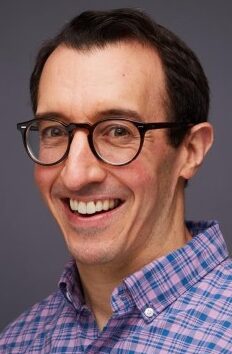 More than 600 people have registered for the National Association of Hispanic Journalists’ 40th anniversary convention July 9-13 in Hollywood, Calif., Executive Director Yaneth Guillen-Diaz told the NAHJ board of directors at its May 4 meeting. She also said the association has more than 3,600 active members. The board was told that the organization has assets of more than $4 million, and it created a Business Journalism Task Force to be headed by Jeff Kauflin (pictured), a senior editor at Forbes.
More than 600 people have registered for the National Association of Hispanic Journalists’ 40th anniversary convention July 9-13 in Hollywood, Calif., Executive Director Yaneth Guillen-Diaz told the NAHJ board of directors at its May 4 meeting. She also said the association has more than 3,600 active members. The board was told that the organization has assets of more than $4 million, and it created a Business Journalism Task Force to be headed by Jeff Kauflin (pictured), a senior editor at Forbes.
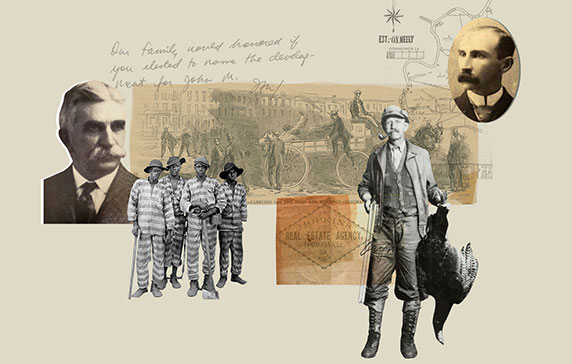
“The forebears of three members of Congress lost wealth and power when slavery was abolished,” Reuters reported. “The families then rebuilt their fortunes and passed them forward. Their success shows how the Southern elite exploited Black Americans in new ways.” (Credit: Reuters)
- A Reuters series, “Slavery’s Descendants: The ancestral ties to slaveholding of today’s political elite,” won first place and Best in Show in the online division of the National Headliners Awards. In the television category, ESPN won for “Sacred Dog.” “What’s so special about a relay race on horses?” (video) the judges asked. “Everything. It’s a celebration of Native American culture and history, dating back to the introduction of horses to North America and the tribal competition of who has the fastest horse. It’s a motivating positive force in reservation life, constantly challenged by poverty, alcoholism and drug addiction.” Among the other awards, Boston journalist Derrick Z. Jackson won first place for feature photography for capturing “the beauty of puffins as he creates a visual record of the successful repopulation of the species along the coast of Maine.”
- Juan Williams, whose contract with NPR ended in 2010 over comments about Muslims and later authored a book expressing his anger, wrote April 29 for The Hill that NPR would be better off without federal funding, but added, “Unfortunately, NPR accepts a very small amount of federal funding. That reality opens the door for its journalists to be called on the carpet by politicians from one side or the other. . . . Journalists should not operate out of fear of angering political parties and government officials.”
- “No history book about Asian American activism over the last five decades is complete without the mention of the storied photographer Corky Lee, whose images of these displays of resistance are collected in CORKY LEE’S ASIAN AMERICA: Fifty Years of Photographic Justice (Clarkson Potter, $50),” WIlson Wong wrote Friday for The New York Times. “PBS News Weekend” spotlighted Lee Saturday as part of its “Hidden Histories” series.
- “The National Newspaper Publishers Association (NNPA) applauds and strongly supports the decision of the Biden-Harris Administration to continue to take the necessary time to hear directly from a wide range of African American leaders, as well as from an array of leaders from other communities of color across the United States, on the proposed FDA ban on menthol cigarettes,” said Dr. Benjamin F. Chavis Jr., NNPA president and CEO,” Stacy M. Brown reported for the trade association April 26. “This a matter of racial profiling and the unintended consequences of proposed rules that will have a negative impact on the communities in which we serve.” Capital B reported in March, “A poll released earlier this month on behalf of the Campaign for Tobacco-Free Kids shows that support of a ban on menthol cigarettes is stronger among Black voters than the electorate as a whole.” Reynolds, parent company of the R.J. Reynolds Tobacco Co., is a sponsor of the upcoming NNPA convention. Chavis has said “this is not about money,” but about unintended consequences.
- “Black Public Media awarded a total of $610,000 to film and immersive projects and creatives at its seventh PitchBLACK Forum — the largest pitch competition for independent filmmakers and creative technologists developing new projects about the global Black experience — at the PitchBLACK Awards,” Valerie Complex reported April 26 for Deadline. She also wrote, “The winner of the $150,000 film award was Zenón, a documentary about the life of Puerto Rican fisherman and revolutionary Carlos ‘Taso’ Zenón, who spearheaded protests against the U.S. Navy’s occupation, exploitation and environmental degradation of his home, the island of Vieques. Puerto Rican director Juan C. Dávila and producer Camila Rodríguez Estrada accepted the grant for their film about environmental racism on an island where the majority of residents are Black Puerto Ricans.”
- “The Affordable Connectivity Program (ACP), crucial for offering discounted internet to more than 23 million low-income households in the U.S., full exhausted full funding Wednesday,” the Joint Center for Political and Economic Studies reported May 2. “In anticipation, the Federal Communications Commission (FCC) announced April 9, 2024, that the maximum reimbursements would be reduced starting May 2024, marking this the program’s final month unless further action is taken. . . .”
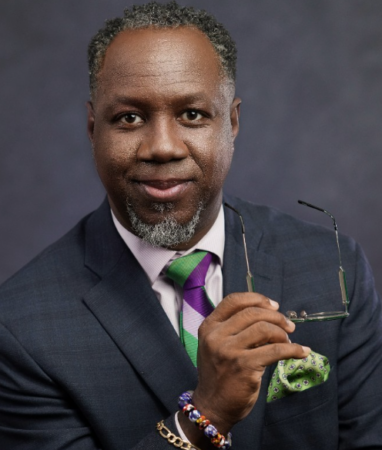 “Financial news site TheStreet.com has hired Conway Gittens (pictured) as an anchor and video producer,” Chris Roush reported May 2 for Talking Biz News. “His most recent job was managing editor of Fintech.TV. Gittens also spent 25 years at Reuters as a correspondent for its video operations, which he left in December 2021. . . .”
“Financial news site TheStreet.com has hired Conway Gittens (pictured) as an anchor and video producer,” Chris Roush reported May 2 for Talking Biz News. “His most recent job was managing editor of Fintech.TV. Gittens also spent 25 years at Reuters as a correspondent for its video operations, which he left in December 2021. . . .”
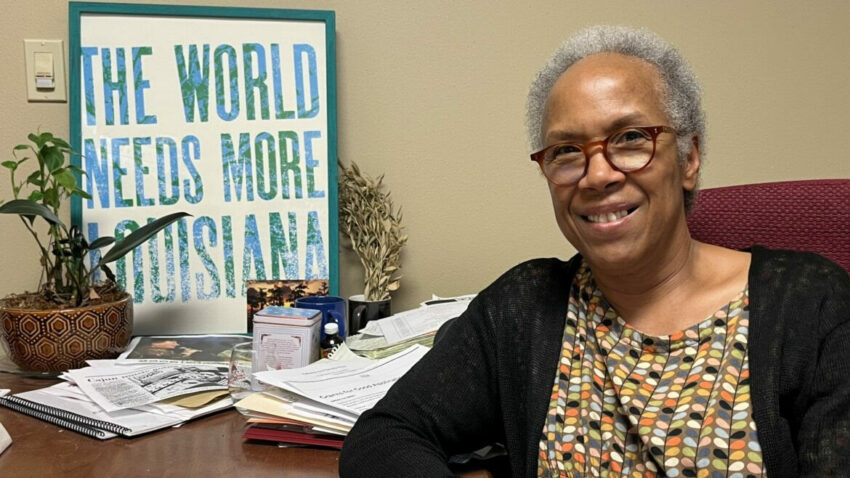
Cheryl Devall in her office at KRVS in Lafayette, La. (Credit: Bailey Bourgeois)
- “It was the music — and the joy it infuses into regional culture — that brought former NPR correspondent Cheryl Devall to KRVS” in Lafayette, La., “as GM in May 2022,” Jon Kalish reported April 30 for Current. “When she relocated from California to take the job, the station hadn’t had a full-time permanent manager since 2012. . . .Devall said she struggled with the decision to apply for the GM job at KRVS. She sought counsel from Neenah Ellis, a former NPR producer who in 2009 decided to leave Washington, D.C., to manage WYSO in Yellow Springs, Ohio. Ellis believes that KRVS’ integral role in the fabric of the community gives Devall a big advantage in rebuilding the station . . . she’ll come to embody the station in much the same way that previous female GMs were able to do. ‘Cheryl is so enthusiastic, so smart, so generous, so thoughtful,’ said Ellis.’ As people get to know her, she becomes the radio station to them.’ . . .”
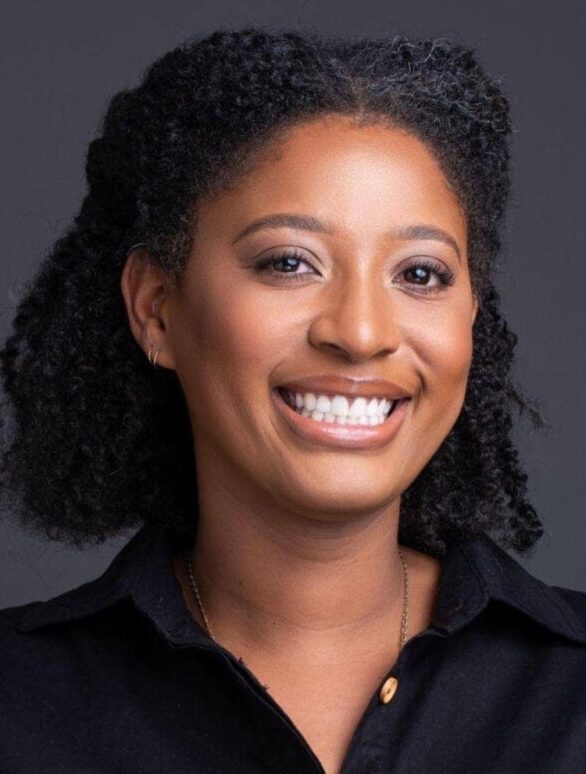 “Lynsey Chutel (pictured) will be joining the London newsroom as a general assignment reporter for the International desk,” New York Times editors announced May 2. “As a reporter-researcher in the Johannesburg bureau, Lynsey brought deft news judgment and strong reporting skills to some of the biggest stories in her patch, while bringing to life people and places across the region.”
“Lynsey Chutel (pictured) will be joining the London newsroom as a general assignment reporter for the International desk,” New York Times editors announced May 2. “As a reporter-researcher in the Johannesburg bureau, Lynsey brought deft news judgment and strong reporting skills to some of the biggest stories in her patch, while bringing to life people and places across the region.”
- “Journalism has become a dangerous occupation in India,” Rana Ayyub reported May 3 for The Washington Post. “Indian journalists, especially from the region of Kashmir, have been incarcerated on terrorism charges or forced to self-censor. Elsewhere in the country, journalists’ homes have been raided and some have been charged with money laundering and income tax evasion. Many have been jailed before their cases are adjudicated. . . . In the past few months, two foreign journalists — one a bureau chief with the Australian Broadcasting Corp., one a French reporter who had lived in India for 23 years — had their credentials revoked or blocked for renewal, and left the country after the government criticized their work. . . .”
- Ahead of World Press Freedom Day on May 3, the BBC announced “for the first time that over 300 World Service journalists — around 15% — are working in exile,” the broadcaster said May 2. “Recent crackdowns on press freedom in Russia, Afghanistan and Ethiopia have pushed more BBC teams to relocate for their own safety, many leaving family and friends behind. . . .”
- “Together with its local partner, Reporters Without Borders (RSF) has been helping more than 170 Afghan journalists who fled to Pakistan, providing financial and administrative assistance and organising networking workshops,” the press freedom organization reported April 29.
- “The number of writers jailed in China has surpassed 100, with nearly half imprisoned for online expression,” Amy Hawkins reported May 1 for The Guardian. “The grim milestone is revealed in the 2023 Freedom to Write index, a report compiled by Pen America, published on Wednesday. With the total number of people imprisoned globally for exercising their freedom of expression estimated to be at least 339, China accounts for nearly one-third of the world’s jailed writers. . . . “
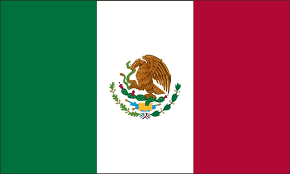 “Under outgoing President Andrés Manuel López Obrador, Mexico has continued to be the country with the most murders of journalists – at least 37 since he became president,” Reporters Without Borders said April 25. “In the run-up to Mexico’s general elections on 2 June, Reporters Without Borders (RSF) urges all of the candidates to finally commit to concrete measures to protect journalists and combat impunity. . . .”
“Under outgoing President Andrés Manuel López Obrador, Mexico has continued to be the country with the most murders of journalists – at least 37 since he became president,” Reporters Without Borders said April 25. “In the run-up to Mexico’s general elections on 2 June, Reporters Without Borders (RSF) urges all of the candidates to finally commit to concrete measures to protect journalists and combat impunity. . . .”
- “Kenya plummeted to the 116th position on the World Press Freedom Index 2023,” David Omwoyo, chief executive officer of the Media Council of Kenya, wrote May 2 for Capital FM. “According to Reporters Without Borders, this represents a fall of 47 positions just within a year. Kenya was ranked at position 69 in the 2022 report. Incidents of violence and intimidation against journalists persist to the chagrin of everyone. The Media Council of Kenya’s documentation of over 100 such incidents in the past year alone is a testament to troubles journalists face in fulfilling their duty. . . .”
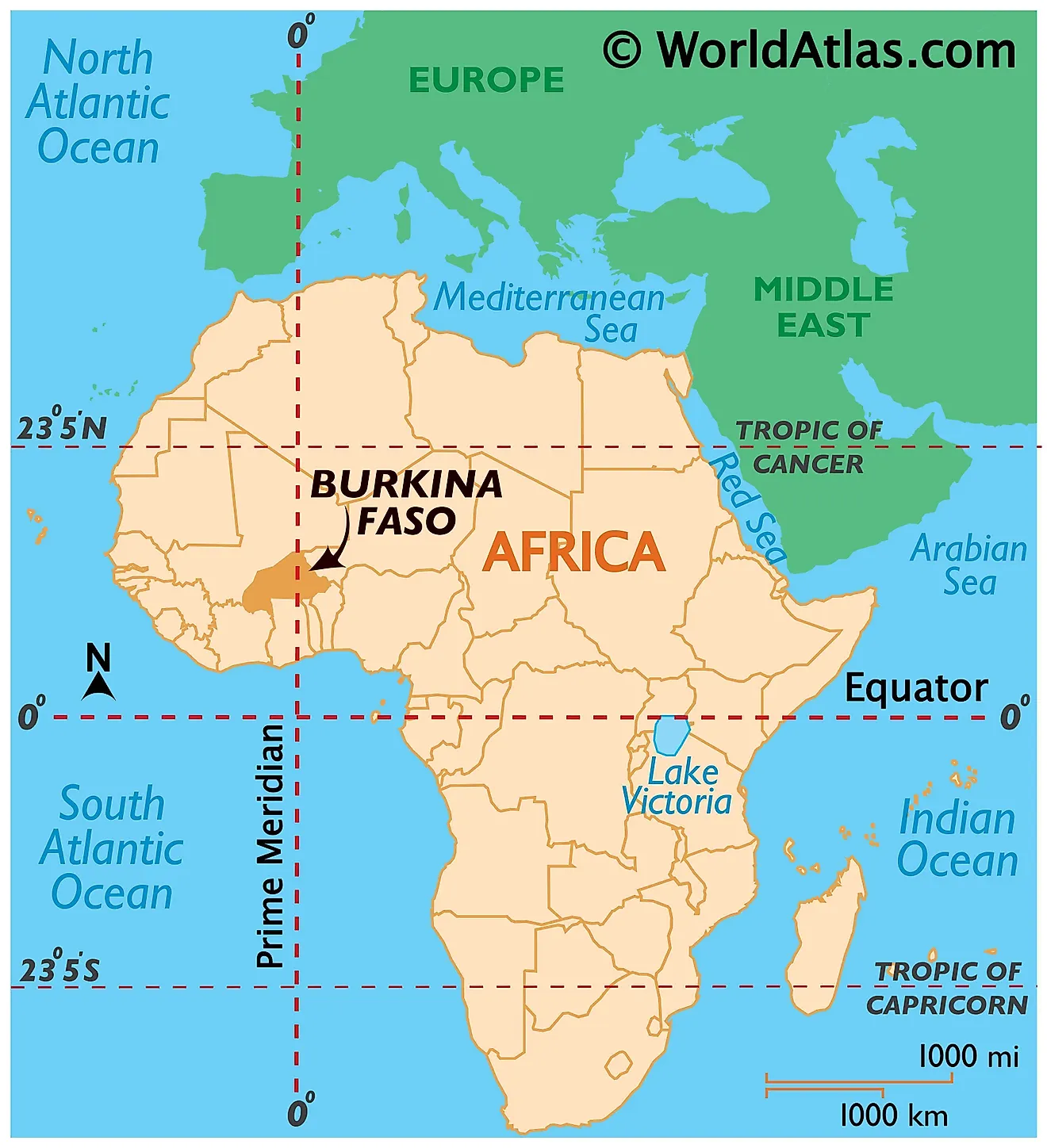 “Burkina Faso has suspended several more international news organizations for their coverage of a Human Rights Watch report that accuses the army of killing civilians in its battle against Islamist armed groups,” Kate Hairsine reported April 29 for Deutsche Welle. “The latest media to be suspended include DW, TV5 Monde and Le Monde, both French media, as well as UK outlet, The Guardian. The move follows the temporary suspension of the BBC and US broadcaster Voice of America last week.” Also: Hundreds in Burkina Faso protest US response to HRW massacre report and video.
“Burkina Faso has suspended several more international news organizations for their coverage of a Human Rights Watch report that accuses the army of killing civilians in its battle against Islamist armed groups,” Kate Hairsine reported April 29 for Deutsche Welle. “The latest media to be suspended include DW, TV5 Monde and Le Monde, both French media, as well as UK outlet, The Guardian. The move follows the temporary suspension of the BBC and US broadcaster Voice of America last week.” Also: Hundreds in Burkina Faso protest US response to HRW massacre report and video.
To subscribe at no cost, please send an email to journal-isms+subscribe@groups.io and say who you are.
Facebook users: “Like” “Richard Prince’s Journal-isms” on Facebook.
Follow Richard Prince on Twitter @princeeditor
Richard Prince’s Journal-isms originates from Washington. It began in print before most of us knew what the internet was, and it would like to be referred to as a “column.” Any views expressed in the column are those of the person or organization quoted and not those of any other entity. Send tips, comments and concerns to Richard Prince at journal-isms+owner@
View previous columns (after Feb. 13, 2016).
View previous columns (before Feb. 13, 2016)
- Diversity’s Greatest Hits, 2018 (Jan. 4, 2019)
- Book Notes: Is Taking a Knee Really All That? (Dec. 20, 2018)
- Book Notes: Challenging ’45’ and Proudly Telling the Story (Dec. 18, 2018)
- Book Notes: Get Down With the Legends! (Dec. 11, 2018)
- Journalist Richard Prince w/Joe Madison (Sirius XM, April 18, 2018) (podcast)
- Richard Prince (journalist) (Wikipedia entry)
- February 2018 Podcast: Richard “Dick” Prince on the need for newsroom diversity (Gabriel Greschler, Student Press Law Center, Feb. 26, 2018)
- An advocate for diversity in the media is still pressing for representation, (Courtland Milloy, Washington Post, Nov. 28, 2017)
- Morgan Global Journalism Review: Journal-isms Journeys On (Aug. 31, 2017)
- Journal-isms’ Richard Prince Wants Your Ideas (FishbowlDC, Feb. 26, 2016)
- Richard Prince with Charlayne Hunter-Gault, “PBS NewsHour,” “What stagnant diversity means for America’s newsrooms” (Dec. 15, 2015)
- Book Notes: Journalists Follow Their Passions
- Book Notes: Journalists Who Rocked Their World
- Book Notes: Hands Up! Read This!
- Book Notes: New Cosby Bio Looks Like a Best-Seller
- Journo-diversity advocate turns attention to Ezra Klein project (Erik Wemple, Washington Post, March 5, 2014)

